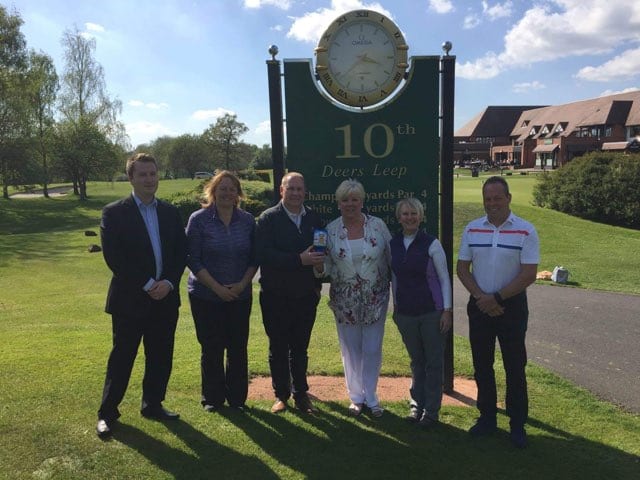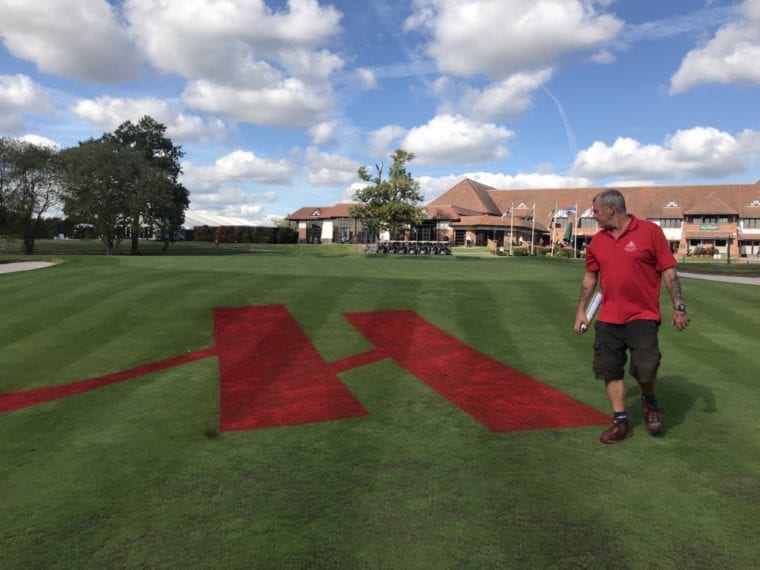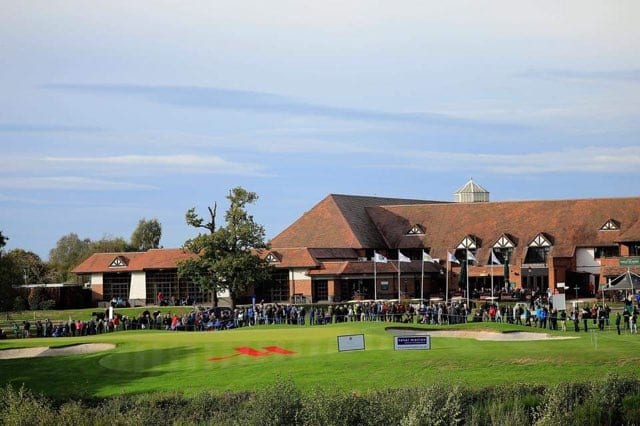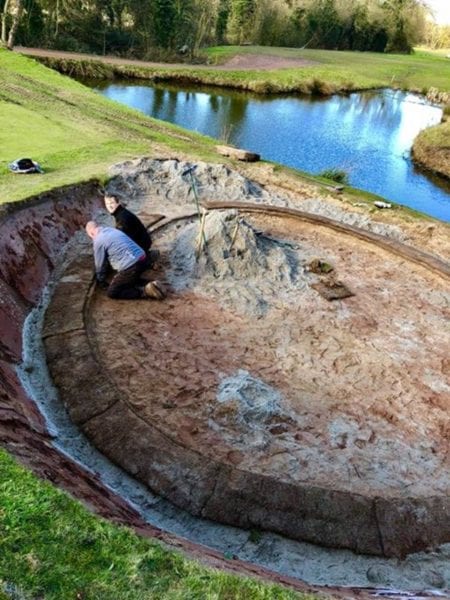The importance of continuously evaluating the customer journey at your venue cannot be overstated. Daily your Clubs members and visitors arrive at your facility with an expectation.
That expectation will be different for all venues, but as Club Managers or Director of Golf, we are all aiming to meet and exceed.
So how do we understand that expectation?
We may be experienced industry professionals and have a good understanding of how to run a successful golf operation, but how do we understand what is specific to our venue and what our members and guests want.
The answer is obtaining regular feedback.

Our members are arguably our best auditors, as they use our facilities the most and rightly expect high standards.
It’s critical to bring members into the process, so that they feel they are providing feedback to enhance, rather than providing criticism they feel staff will take personally as a failure to carry out their daily tasks.
When they feel they are part of the process and staff are open to that feedback, everyone is moving in the same direction for continuous improvement and consistency.
Over the years I have tried various methods but find the best way to benefit is by sitting down for an informal catch up with a coffee in the clubhouse or a quick 2 minutes at the halfway house before they head to the back 9.
The more relaxed the member is the more likely you will obtain more information that will help you.
Mystery shopper visits conducted by the general public are vital. Feedback taken from this angle is particularly important as they are the golfers who will return time and time again.
I have worked closely with the 59 Club for several years and find their feedback to be very informative across the whole golf experience:
- Phone Reservation,
- Arrival,
- Golf Shop,
- Pre and Post Golf Food & Beverage,
- Golf Academy,
- First Tee Starters,
- Course Marshalls,
- Half Way Houses and
- the Golf Course itself.
Following each visit, the team and I review, build an action plan and share with other team members to strive to improve. At team meetings, feedback from the team will often be shared and these are also built into the plan, so the team owns the process.
Only recently we have used the feedback to support our plans to both renovate and extend our golf shop, reposition our check-in desk and improve that all-important sense of arrival.
The feedback received has been very positive and important sales in the newly extended area have rocketed, selling more logod product in the first 6 months of the year than we did in the entire previous year.

The feedback can also be eye-opening and alarming, but I urge you to be brave. It is easy to become complacent and have an “if it’s not broke don’t fix it” mentality, but how can you fully understand how good your operation can be?
How can you capitalise on opportunities when you do not know what they are?
Open your operation up to feedback and be humble enough to understand that it is a continuous process and no operation is perfect (like our golf games).
The most important thing is to continuously progress and improve your operation, which will also lead to increased job satisfaction and confidence to your staff and employers that you are taking the operation forward.
The starting point to achieve progress is to understand that all-important customer journey and the various stages within it.
We all have different operations in terms of size and resource, so it’s important to identify what you can execute daily and consistently deliver. Again, it’s important that the team is at the centre of this, as ultimately, they must deliver this journey consistently.
Once you have established and built that customer journey, its crucial to walk it several times a day to ensure the facilities appearance and service delivery is at its optimum.
Leaders within our functions, it is impossible for us to carry out walk rounds all day due to emails, conference calls, meetings, reports, site visits etc. I remember speaking to Gregg Patterson who once told me that you “Can come in on any given day with a plan and then a Kid puts an orange down the toilet and the plan goes out the window”.
Therefore, you require a strong buy-in from your teams to support you on this.
This can require a cultural change and the key is communicating and walking the areas with each team member so that they understand what you are trying to achieve, the expectation and why.
Regular walk rounds that are logged by Managers and Supervisors daily, in addition to the walk rounds you do ensure that there is continued focus on the presentation of your areas.
The logged reports are then followed up on and any maintenance issues reported to our engineering team. The team also follow up and use the reports to assist in purchasing decisions. For example, it could be the quality of range balls, signage that needs replacing, locker keys, the condition of starters hut.

We often discuss the “touchpoints” of the customer journey, and it’s crucial that you see positive engagement with all staff, as without this you cannot achieve the experience you are trying to create.
You can have the best facilities in the world, but if the service is not at an equally high standard across all touchpoints, the overall experience is massively affected.
In addition, it’s very important that each staff member converses with each guest and asks the right questions in a way that does not sound scripted.
Taking the arrival as an example, it’s important that each guest is directed to the locker rooms, academy, putting greens, 1st tees and bar areas as is upselling the additional items such as buggies, driving range tokens, strokesavers and confectionary (“Selling is Service, and Service is Selling”).
However, if this conversation is not carried out naturally, then it can feel like the staff member is ticking the boxes, just doing their job, is not genuinely showing an interest in the guest and feel they are just a number.
To overcome this, we have tried “Get to know the golfer” programmes, where each staff member must find out at least 3 pieces of information specific to that guest to encourage engagement.
Over the years, the phrase which has stuck with me is “People + Process = Performance”.
Staff can tend to be one or the other and it requires continuous feedback and training to create that balance required to create that connection with guests, whilst providing all that vital information, which will assist your operation in establishing that advantage over your competitors.
In evaluating our service offering, the whole team has access to the 59 Club visits, so they can view the feedback each month. The visits specify the employees on duty and rate their performance.
In certain operations, this may be slightly awkward, but in our operation, we continuously focus on improving and support each other through the process.
For example, the Manager or Supervisor who is writing the action plan may be critiquing himself and having to tell himself that he needs to improve in front of the rest of the team at the meetings.
It’s important to realise at this point that the visits are used as a “Training Tool” and we do not use this service to berate or embarrass one another, but it does illustrate that the team regardless of position have to be open and honest with one another to aid progression.
By knowing that their performance contributes to the overall goals of the team, this also promotes teamwork and a sense of “we are all in this together”.

The Course is a hugely important part of the evaluation and we have a highly engaged greens team, who are open to feedback and continuous improvement.
We are very fortunate to host high profile Tour Events, with us hosting the European Senior Masters only a couple of weeks ago.
The team knows that they are working towards delivering a tour standard golf course all year long, but regular feedback from members and guests assists them in delivering this.
Playing the golf course through the eyes of the player is very important and allows you to understand the feedback from their point of view.
That being said, I would recommend Course Drives are equally important so you can take time to view a certain part of the course, without the pressure of keeping up with the group in front or socialising with your playing partner.
Taking the time to evaluate the course/courses is critical to making those changes that will enhance the course.
Again, the 59 Club Data is very useful with the pictures illustrating the comments. The Head Greenkeeper shares all photos and comments with the team and builds an action plan to improve.

So, what is the outcome of all the continuous evaluation of our customer journey?
- An engaged team working towards the same goal
- 59 Club Golf Operations Team of The Year 2017
- 59 Club Gold Flag Award – consistently ranked in top 10 venues measured since 2008
- Increased overall score by 4% to a record high
- On Course Presentation consistently more than 91%
- July 2018 – Best Retail Performance in a decade
Importantly, the course and operations teams (including F&B) performance goals are aligned with the 59 Club audits, so the teams know that their overall performance is being measured against the criteria.
This again serves as a great motivational tool as the team knows they will be rewarded for achieving their goals.
In summary, I would say that the continuous evaluation of your customer journey will enhance your facility massively, which in turn will assist you in driving those revenue streams critical to your business, develop your team and build a culture of continuous improvement.
